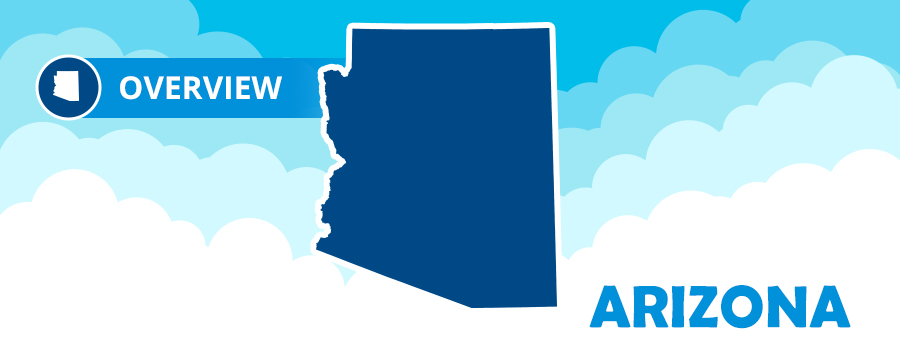Homeschooling in Arizona
Arizona is a popular state for homeschoolers because of the amount of freedom offered, but also because of the resources offered. There are plenty of support groups offered throughout the state, and plenty of educational opportunities available. Yet, with all that to look forward to, we know you might still have concerns and may be wondering, “just how does homeschooling work in Arizona?”
We want you to feel confident in your choice to start homeschooling in Arizona. You are likely eager to know about how to enroll, where to find support, and even which curriculum may be best for your student(s). Let’s get this homeschool adventure started!
- How to Homeschool in AZ
- Arizona Homeschooling Laws
- Arizona Homeschool Associations
- Arizona Homeschool Groups and Co-ops
- Homeschool Field Trips in Arizona
- Arizona Standardized Testing and Test Prep
- Why Time4Learning is the Leading Homeschool Curriculum in Arizona
This information should by no means be interpreted as legal advice. It is your responsibility to interpret and understand the laws that you will be homeschooling under.
How to Homeschool in Arizona
Follow these steps to begin homeschooling in Arizona:
- Submit a notarized affidavit of intent to homeschool to the county school superintendent within 30 days of starting to homeschool
- Choose the ideal curriculum for your family. Your chosen curriculum must at least cover the following subjects
- Reading
- Grammar
- Mathematics
- Social studies
- Science
- Start having fun learning together!
Arizona Homeschooling Laws
A few of the homeschool laws parents in Arizona need to know about include:
- All children ages 6 to 16 must attend school under compulsory education laws, and home education is one way to fulfill this obligation.
- You must submit a notarized affidavit of your intent to homeschool to the superintendent’s office of the student’s home county school district.
- If you end your period of homeschooling you must notify your superintendent’s office within 30 days of enrolling in another school (unless your student has graduated).
To learn more about staying compliant, visit our Arizona Homeschooling Laws page.
Arizona Homeschool Associations
Arizona has a large and growing population of homeschoolers and is fortunate enough to have a statewide organization with the goal of providing information, resources, and events to families choosing this educational path.
To find out more about this organization and its potential benefits, visit our Arizona Homeschool Associations page.
Arizona Homeschool Groups and Co-ops
In addition to a statewide association for homeschoolers, Arizona also offers many local and regional support groups. Whether you are looking for support online or groups or cooperatives that meet in person, there is plenty of support for homeschooling families in Arizona.
Start your search for the right group for you on our Arizona Homeschool Groups and Co-ops page.
Arizona Homeschool Field Trips
Homeschooling isn’t all lessons and instruction, of course. Home education offers families the flexibility to learn when, where, and how they determine best. And for many families, that includes abundant opportunities to take their homeschool on the road for day trips and excursions that allow for hands-on, experiential learning. Please make sure to contact each site before you plan your visit, as COVID-19 may have impacted their hours of operations. Discover field trip opportunities by region on our Homeschool Field Trips in Arizona post.
Arizona Homeschooling by City
Homeschoolers in Arizona can discover exciting opportunities throughout the state in the links below:Arizona State Test Prep
Time4Learning standards based curriculum builds the skills that students are tested on standardized tests. Many families appreciate the opportunity to evaluate how their homeschooler is progressing in comparison with other students at his or her grade level. Most educational experts agree that testing is a measure of how well students comprehend and apply knowledge. Learn more in our Arizona test prep page.
Why Time4Learning is the Leading Homeschool Curriculum in Arizona
In Arizona, homeschool curriculum choice is completely up to parents and students. So, it’s important to understand what programs will best fit your individual student’s needs and your overall homeschool goals and budget. A few of the reasons that Time4Learning is an ever-popular curriculum choice for Arizona families include:
- Children love using the computer to learn. Time4Learning is a convenient, online homeschool curriculum that combines education with interactive fun.
- Time4Learning covers all the core subjects that are required by Arizona homeschool law. Our PreK-12 online curriculum offers standards-based instruction in language arts, math, social studies, science, and more.
- Self-paced, modularized lesson plans allow you to move forward and back through the materials whenever you want.
- You can skip lessons that teach concepts your child has already mastered and repeat those he or she has not. The choice is yours!






